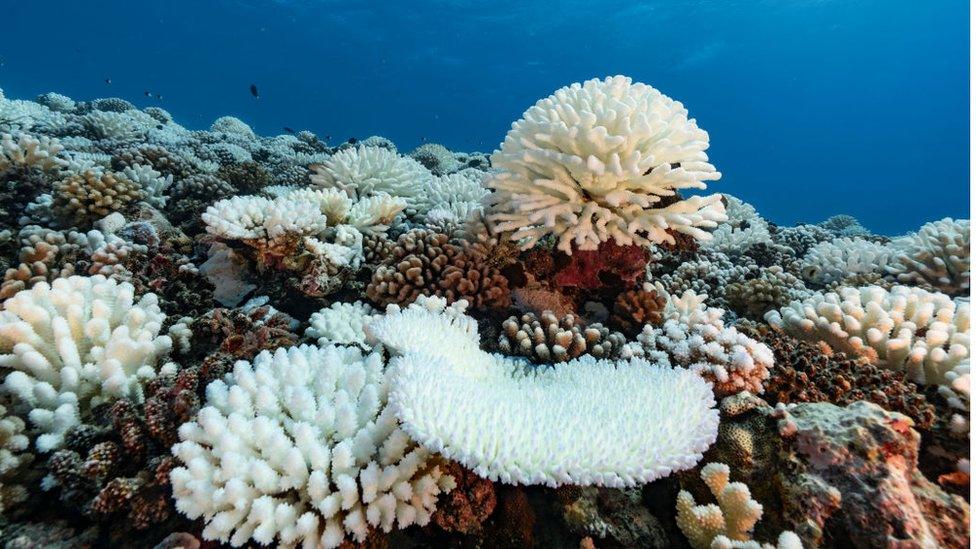Climate change: Great Barrier Reef has lost half of its coral
- Published
- comments

When bleaching happens the corals turn white and lose their colour
Australia's Great Barrier Reef has lost more than half of its corals since 1995 due to climate change warming the seas, a study has found.
Lots of different types of corals in the reef have suffered.
Many corals had already been lost in 2016 and 2017 after something called mass bleaching. Now more mass bleaching has happened this year.
Climate change: What is coral bleaching?
Bleaching happens when sea temperatures get too high or low, causing algae to get 'stressed out' and leave the coral.
These tiny algae are important because they produce about 90% of the food that coral needs to grow.
When the algae leaves, the coral is left without its main source of food and it turns white.
This is a branching coral one of the species of coral that is most affected by bleaching
Marine scientists at the ARC Centre of Excellence for Coral Reef Studies in Queensland are in charge of the study. They have been watching these corals for 25 years.
They say the number of corals in the reef has dropped by half in all coral sizes and species, but branching and table-shaped corals are the worst affected.
These types of coral are large and make good homes for fish and other marine life.
They think the situation is now urgent, saying: "There is no time to lose - we must sharply decrease greenhouse gas emissions ASAP."
The full scale of this latest bleaching is still being studied, but experts are concerned about how climate change could impact the long-term survival of the coral and what this means for the sea life that lives there.
- Published9 April 2020
- Published14 March 2016
- Published10 April 2017
